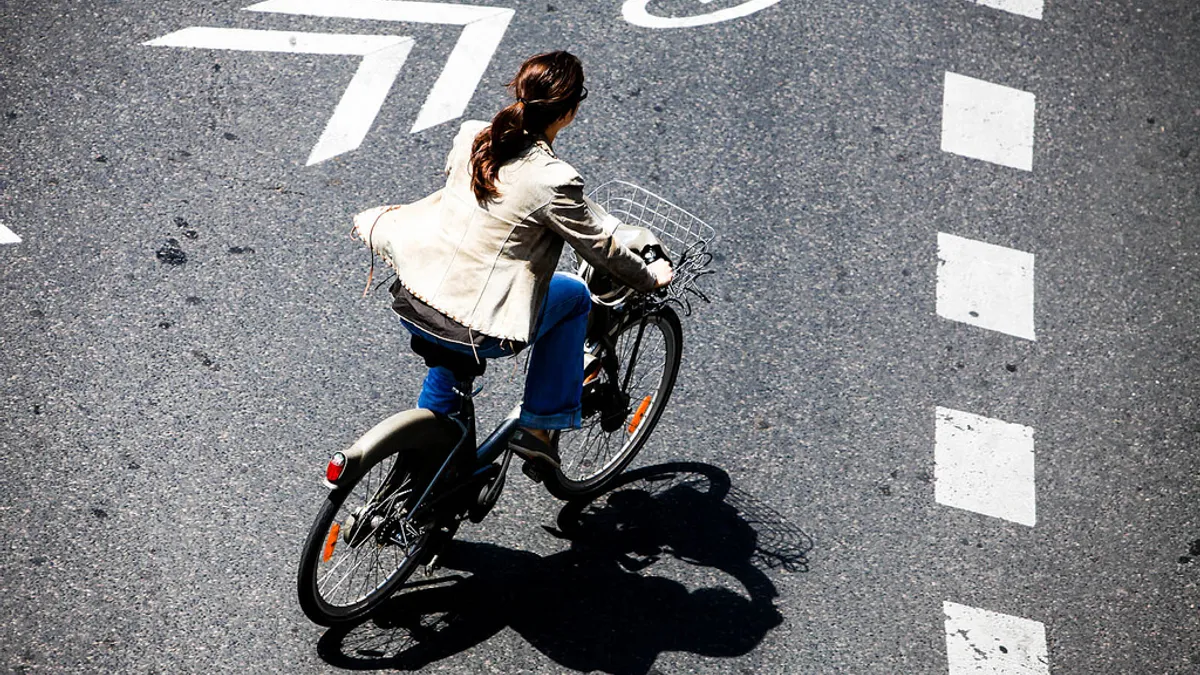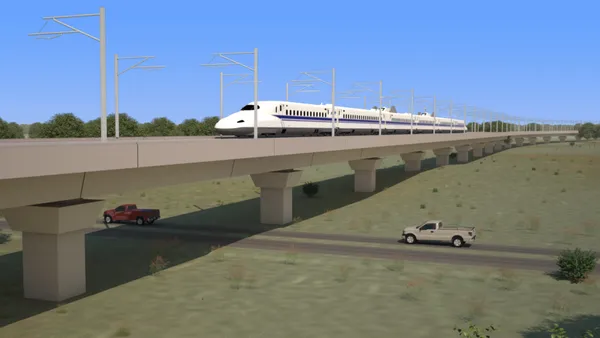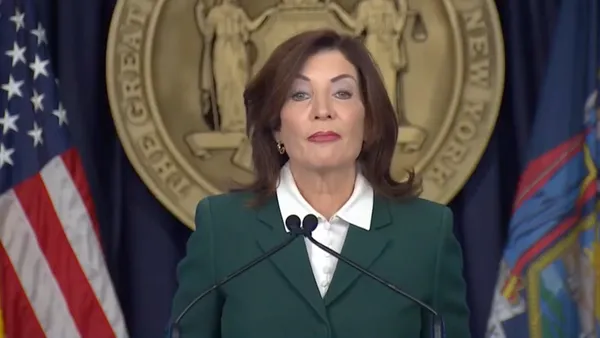Dive Brief:
- Florida, Texas and California are home to 13 of the 20 most dangerous U.S. cities for cyclists, according to a new analysis of National Highway Traffic Safety Administration (NHTSA) data. Collectively, the three states accounted for 41% of all cyclist fatalities in the U.S. between 2014 and 2017.
- The analysis found that cyclist deaths increased 25% between 2010 and 2017, with 783 cyclist fatalities nationwide in 2017 alone. According to a NHTSA report released in October, the number of cyclist fatalities rose to 857 in 2018.
- Cities with above-average rates of cyclist fatalities per number of residents and communities were clustered in the Southeast, which also tended to have below-average rates of overall bike commuters.
Dive Insight:
Even as road deaths have slightly declined, the number of pedestrian and bicyclist deaths has climbed. Pedestrian deaths rose to 6,283 in 2018, the October NHTSA report found, a record high since 1990. It's a troubling trend, especially as cities have worked to get commuters out of their cars and onto newer options like shared bike and scooter fleets.
Experts have said a lack of safe infrastructure partially contributes to the death rates. A 2019 report from Smart Growth America concluded that poorly designed roads and intersections left bicyclists and pedestrians at risk, forcing them to walk through busy roads or be condensed into crowded sidewalks and bike lanes. That was especially true of minority and low-income neighborhoods, which traditionally see lower rates of infrastructure investment.
Similar to this report, Smart Growth America found that the most dangerous states for pedestrians, adjusted for population, were in the South. (That report found that Orlando was the most dangerous city for pedestrians.)
Policymakers have focused increasing attention to the issue, especially through Vision Zero programs that seek to eliminate traffic deaths. New York, for example, has pledged to build 30 miles of protected bike lanes each year through 2021, and San Francisco voted to ban cars on its busy Market Street. Advocates have also pitched that New York and other cities appoint a "bike mayor" to push for better infrastructure and transportation policy.
A federal House bill was introduced in October 2019 to fund more Vision Zero programs throughout the country, building on the more than 40 efforts already in place.










